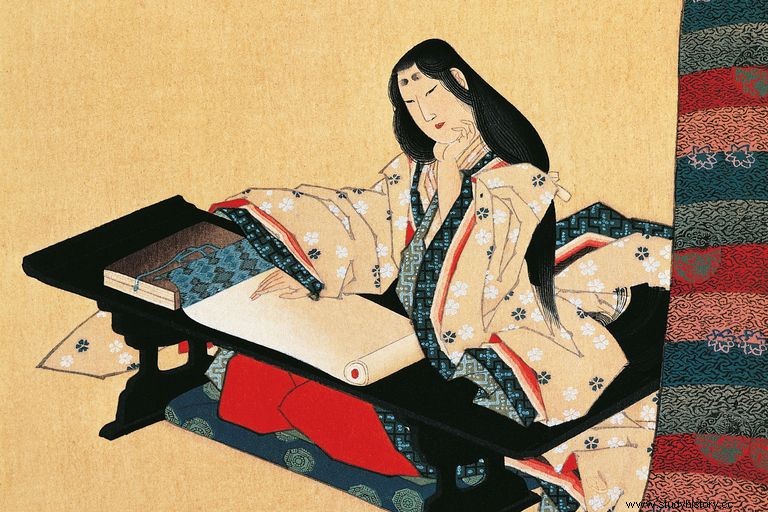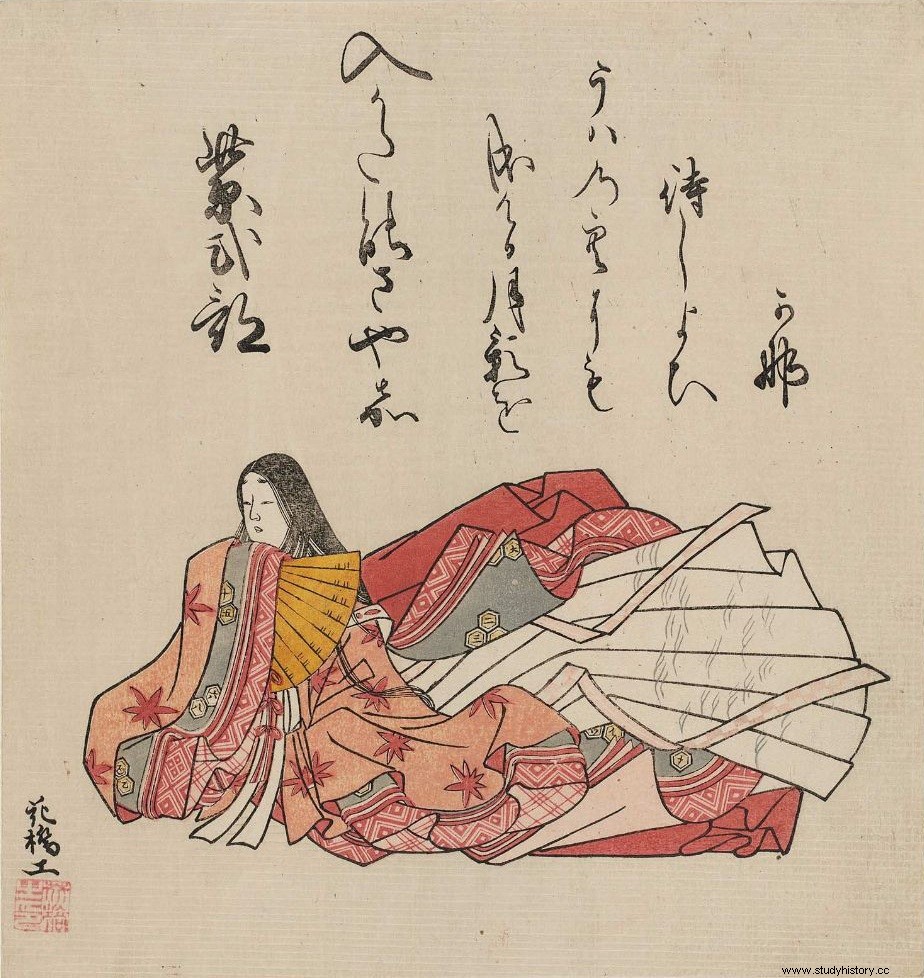Japan has not always been the land of the samurai. When we think of the ancient history of the Land of the Rising Sun, the first thing that comes to mind is the image of these legendary medieval warriors. Its famous katanas, its picturesque castles, its braided silk armor, its long lacquered bows, its endless internecine wars... Yes, the samurai caste, the Japanese warrior nobility, dominated the destinies of the insular empire for nearly a millennium, well into the 19th century, but things weren't always like this.
Before these fierce warriors entered the pages of history with blood and fire, there was a time in Japan when the pen was mightier than the sword. Or, rather, the brush, which was what was used to write. We are talking about the dawn of the second millennium of our era, around the year 1000. The moment of maximum splendor of classical Japan, just before the civil wars of the Middle Ages plunged the country into darkness for centuries. This is known as the Heian period. , which has remained forever in the collective subconscious of the Japanese people as one of the high points of their civilization. Because these times of peace and happy Arcadia were also the golden age of Japanese letters. Hence the preference for the strokes of the brush against the steel of the sword. And, in this era of refinement and splendor, the greatest geniuses of Japanese literature were women . The signatures that shone with more force among all the pleiad of writers and poets of Heian Japan are the feminine ones. Of course, at a time when talented authors are springing up like mushrooms on the streets of Kyoto, it's not easy to choose just one name. We will stay with two, two prodigies that coincided in time and place and whose brilliance eclipsed the other poets of his time and centuries to come. Their literary genius was so immense that Japan at the time was not big enough for both of them. Professional jealousy and palace intrigues led them, inevitably, to collide with each other. We talk about Murasaki Shikibu and Sei Shonagon , two exalted writers, the greatest that Japan has given to the world. And, at the same time, fierce rivals.

Let's start at the beginning:we are around the year 1000 and the imperial court is at its peak. The arts bloom in Kyoto more splendidly than the cherry trees on neighboring Mount Yoshino. Precisely from there comes the name by which this period of splendor is known:the Heian era. . Heian , which would translate as "Peace and tranquility" is the old name of the recently founded city of Kyoto, the brand new capital of the empire. The Heian era was a time of relative peace, in which Japan took the Chinese influences that it had received in the previous centuries and transformed them to create a new and original culture. A refined and exquisite world where elegance and beauty are the measure of all things. In the lavish imperial court, dominated by a cultured and poetry-loving aristocracy, the ability to compose a verse was what determined their social position.
And it is that the lyrics were not exclusive to the male gender. It is true that not all women wrote, and that the number of men dedicated to glossing the beauty of the world with words was greater than that of women. In fact, only a very select minority of noble courtiers could afford to sit and write poems in the shade of the cherry trees. The bulk of the population was illiterate and limited themselves to breaking their backs every day in the fields. But within this elite of idle courtiers, poetry was a highly regarded pastime, and it was considered only natural that ladies should engage in this hobby on an equal footing with their male peers. Although there were also subtle forms of discrimination:just as in Europe at the time the cultured language was Latin, in Heian Japan the prestigious language was classical Chinese. Important laws and treaties were written using rough and complicated Chinese characters that only a few scholars were fluent in. Poetry, which despite its social importance was still a mere hobby, a minor art, was written and recited in Japanese, and for this a different alphabet was used, sometimes called the "female alphabet", since Chinese was by definition exclusively for men. This other syllabary was reserved for women, simpler and more summarized, but also more elegant and evocative in its strokes. Perhaps because of this calligraphic beauty, both men and women preferred this "female alphabet" when writing their verses and intimate diaries. Over the centuries, in a beautiful example of the yin (the feminine) triumphing over the yang (the masculine), this alphabet initially considered minor would end up being one of the bases of the current Japanese writing.

However, in the literary world of the time there was a climate of certain freedom and equality. Our two protagonists, being companions of two different empresses, knew how to take advantage of this situation to inscribe their names with golden letters in universal literature. Although, rather, we should say nicknames, because Murasaki Shikibu and Sei Shonagon They are not their real names, in fact they are the nicknames by which they were known in the palace and that have remained for posterity.
His is not a unique case:in Japan at the time, especially in palatial settings, it was considered good taste not to mention one's first name. In the case of ladies, the position held by their fathers or husbands at court was used, and sometimes the nickname was later completed with a note of color. Thus, Murasaki Shikibu would come to mean Violet Lady Daughter of the Master of Ceremonies , and Sei Shonagon Daughter of Junior Ranking Official Kiyohara . Paradoxically, today we only know these two authors, the greatest geniuses of Japanese literature, by nicknames alluding to their male relatives. That's how things were in ancient Japan.
Then, as now, it cannot be said that there was equality of the sexes, but women did enjoy a certain freedom that, in the following centuries, would be unthinkable for Japanese women:they could come to exert considerable political influence and also led a fairly romantic love life. busy. In the court of Kyoto, extramarital affairs were the order of the day, even furtive encounters between lovers were subject to a complicated and refined protocol. It was almost considered something of good taste, an art that every good person should cultivate. If you didn't have two or three suitors, you were nobody in the capital. And that was as true for them as it was for them. But, in addition to the happy life and palace conspiracies, the ladies of the time could also give free rein to their talent in the field of the arts. And that is just what Murasaki Shikibu and Sei Shonagon did. With them, Japan in the 10th and 11th centuries may have lost a couple of self-sacrificing matrons of the palace, but history gained two exceptional chroniclers. Nobody like them has left, black on white, a testimony of what life was like in that happy golden age, in that classic Japan of the Heian period. .
To be continued... Murasaki and Sei, like a Góngora and a Quevedo from ancient Japan (female version) .
